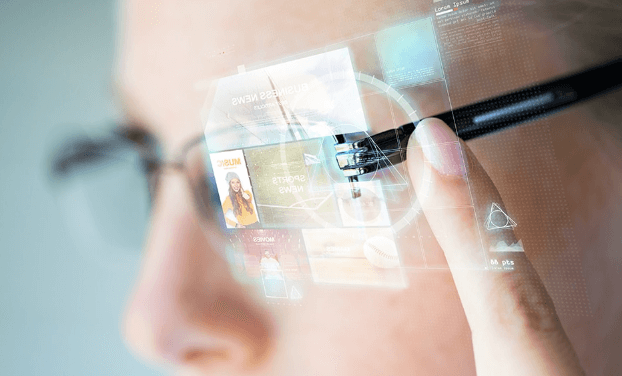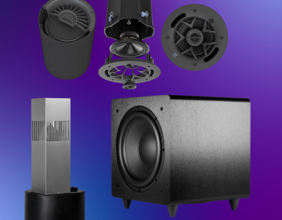What are the new developments in wearable technology, and how are they improving personal health management?

Introduction
Wearable technology has come a long way from the simple pedometers of the past. Today, it encompasses a wide range of sophisticated devices that not only track physical activity but also monitor various health parameters, provide insights, and even offer medical-grade data. This article delves into the latest developments in wearable technology and how they are revolutionizing personal health management.
The Evolution of Wearable Technology
Wearable technology has evolved significantly, transforming from basic fitness trackers to advanced health monitoring systems. Early devices focused on counting steps and estimating calories burned. Modern wearables, however, incorporate sensors that measure heart rate, sleep patterns, blood oxygen levels, and even stress.
Smartwatches: The All-in-One Health Companion
Smartwatches have become the quintessential wearable, integrating multiple health features into one device. Beyond telling time, these gadgets track fitness activities, monitor heart rate, and even detect irregularities like atrial fibrillation. With continuous advancements, smartwatches now offer features such as ECG readings, blood pressure monitoring, and fall detection.
Fitness Trackers: Precision in Activity Tracking
Fitness trackers remain popular due to their simplicity and focus on activity tracking. Newer models are more accurate and offer additional features such as VO2 max estimation, stress tracking, and guided breathing exercises. They are lightweight, water-resistant, and have improved battery life, making them ideal for everyday use.
Wearable ECG Monitors: Revolutionizing Heart Health
ECG monitors worn on the wrist or chest can provide real-time heart health data. These devices are particularly useful for individuals with heart conditions, as they can detect abnormal heart rhythms and provide data that can be shared with healthcare providers. The integration of AI in these devices enhances their ability to predict and warn users of potential cardiac events.
Smart Rings: Discreet and Effective Health Monitoring
Smart rings offer a less obtrusive way to monitor health. These devices track a range of metrics including sleep quality, heart rate, and activity levels. Their discreet design makes them suitable for all-day wear, providing continuous health insights without the bulk of larger devices.
Wearable Blood Pressure Monitors: Convenience and Accuracy
Managing blood pressure is crucial for many individuals, and wearable blood pressure monitors provide a convenient solution. These devices are designed to be worn on the wrist or arm, offering real-time readings and trends. They can alert users to potential issues, helping them manage their condition more effectively.
Continuous Glucose Monitors: Transforming Diabetes Management
Continuous glucose monitors (CGMs) have revolutionized diabetes care. These small devices, typically worn on the abdomen or arm, provide real-time blood glucose levels and trends. They alert users to high or low glucose levels, helping them make informed decisions about their diet, exercise, and medication.
Smart Glasses: Augmenting Health and Fitness
Smart glasses are emerging as a new player in wearable technology. While primarily used for augmented reality applications, they also offer health and fitness features. These glasses can display real-time data from other health devices, provide guided workouts, and even help with posture correction.
Wearable Respiratory Monitors: Enhancing Breathing Awareness
Respiratory monitors are essential for individuals with conditions such as asthma or COPD. Wearable devices can track breathing patterns, oxygen saturation, and even detect respiratory distress. This data helps users manage their conditions better and provides valuable information to healthcare providers.
Sleep Trackers: Understanding and Improving Sleep Patterns
Sleep trackers have advanced significantly, offering detailed insights into sleep stages, disturbances, and overall sleep quality. Modern devices use a combination of motion sensors, heart rate monitors, and even sound analysis to provide a comprehensive picture of sleep health. Improved sleep tracking helps users make adjustments to their routines for better rest.
Wearable Thermometers: Continuous Temperature Monitoring
Wearable thermometers provide continuous body temperature monitoring, which is particularly useful during illnesses or for tracking ovulation. These devices can alert users to feverish conditions and provide trends that help in understanding body temperature variations throughout the day.
Smart Clothing: Integrating Technology into Everyday Wear
Smart clothing embeds sensors into fabrics to monitor a range of health metrics. These garments can track heart rate, muscle activity, and even hydration levels. They are particularly useful in sports and rehabilitation, providing detailed data to optimize performance and recovery.
AI and Wearable Technology: Enhancing Data Interpretation
Artificial intelligence plays a crucial role in wearable technology, helping to analyze and interpret the vast amounts of data these devices collect. AI algorithms can detect patterns, predict health issues, and provide personalized recommendations. This enhances the overall effectiveness of wearables in health management.

The Role of Wearables in Preventive Healthcare
Wearable technology is instrumental in preventive healthcare, allowing for early detection of potential health issues. Regular monitoring and data analysis help identify trends and anomalies, prompting timely medical intervention and lifestyle adjustments to prevent serious conditions.
Integration with Health Apps: Seamless Health Management
Health apps complement wearable devices by providing a centralized platform for data analysis and health management. These apps can track long-term trends, set goals, and offer personalized advice. Integration with other health services, such as telemedicine, further enhances their utility.
Challenges and Limitations of Wearable Technology
Despite the advancements, wearable technology faces challenges such as data accuracy, battery life, and user compliance. Privacy concerns also arise with the continuous collection and sharing of health data. Addressing these issues is crucial for the widespread adoption and trust in wearable devices.
The Future of Wearable Technology
The future of wearable technology looks promising, with ongoing research and development aimed at improving accuracy, miniaturization, and functionality. Innovations such as flexible electronics, bio-integrated sensors, and advanced AI will further enhance the capabilities of wearables, making them indispensable tools for personal health management.
How Wearables are Shaping Personalized Healthcare
Wearables are at the forefront of personalized healthcare, offering tailored insights and recommendations based on individual health data. This personalized approach empowers users to take proactive steps in managing their health, leading to better outcomes and improved quality of life.
The Impact of Wearable Technology on Mental Health
Wearable devices are also making strides in mental health management. Features such as stress tracking, guided mindfulness exercises, and mood monitoring help users manage their mental well-being. These insights can lead to better mental health practices and early intervention for mental health issues.
Wearables in Sports and Fitness: Enhancing Performance
Athletes and fitness enthusiasts benefit greatly from wearable technology. These devices provide detailed data on performance, recovery, and training effectiveness. By analyzing this data, users can optimize their workouts, prevent injuries, and achieve their fitness goals more efficiently.
Wearables and Aging Population: Supporting Senior Health
The aging population stands to gain significantly from wearable technology. Devices tailored for seniors can monitor vital signs, detect falls, and provide reminders for medication. This support helps older adults maintain independence and improves their overall safety and health.
Wearable Technology in Remote Patient Monitoring
Remote patient monitoring (RPM) is gaining traction, especially in managing chronic conditions. Wearable devices enable continuous monitoring of patients outside clinical settings, providing real-time data to healthcare providers. This leads to better management of chronic diseases and reduces the need for frequent hospital visits.
The Role of Wearables in Workplace Wellness Programs
Employers are increasingly incorporating wearable technology into workplace wellness programs. These programs encourage healthy behaviors, track fitness progress, and provide insights into employee well-being. This can lead to a healthier workforce and reduce healthcare costs.
Enhancing Patient Engagement with Wearable Technology
Wearable technology enhances patient engagement by providing users with real-time health data and insights. This empowers individuals to take an active role in their health management, leading to better adherence to treatment plans and healthier lifestyles.
Wearables and Telemedicine: A Powerful Combination
The integration of wearable technology with telemedicine creates a powerful tool for healthcare delivery. Wearables provide continuous health data that can be shared with healthcare providers during virtual consultations, leading to more informed decision-making and better patient outcomes.
Conclusion
Wearable technology is transforming personal health management by providing real-time data, enhancing preventive care, and empowering individuals to take control of their health. As advancements continue, these devices will become even more integral to our daily lives, promoting better health and well-being for all.
FAQs
What are the latest features in smartwatches for health monitoring?
Recent advancements in smartwatches include ECG readings, blood pressure monitoring, fall detection, and stress tracking. These features provide comprehensive health insights and early detection of potential health issues.
How do continuous glucose monitors work?
Continuous glucose monitors (CGMs) use a small sensor inserted under the skin to measure glucose levels in interstitial fluid. They provide real-time readings and trends, helping individuals with diabetes manage their condition effectively.
Can wearable devices accurately monitor heart health?
Yes, wearable devices equipped with ECG monitors and advanced sensors can accurately track heart health. They detect irregular heart rhythms and provide data that can be shared with healthcare providers for further analysis.
What are the benefits of using wearable respiratory monitors?
Wearable respiratory monitors track breathing patterns, oxygen saturation, and detect respiratory distress. They are beneficial for individuals with conditions like asthma or COPD, providing valuable data for better condition management.
How do smart rings compare to other wearable devices?
Smart rings offer a discreet and comfortable way to monitor health metrics such as sleep quality, heart rate, and activity levels. They provide continuous insights without the bulk of larger devices like smartwatches or fitness trackers.
What challenges do wearable technologies face?
Wearable technologies face challenges such as data accuracy, battery life, user compliance, and privacy concerns. Addressing these issues is essential for increasing the adoption and effectiveness of wearable health devices.




